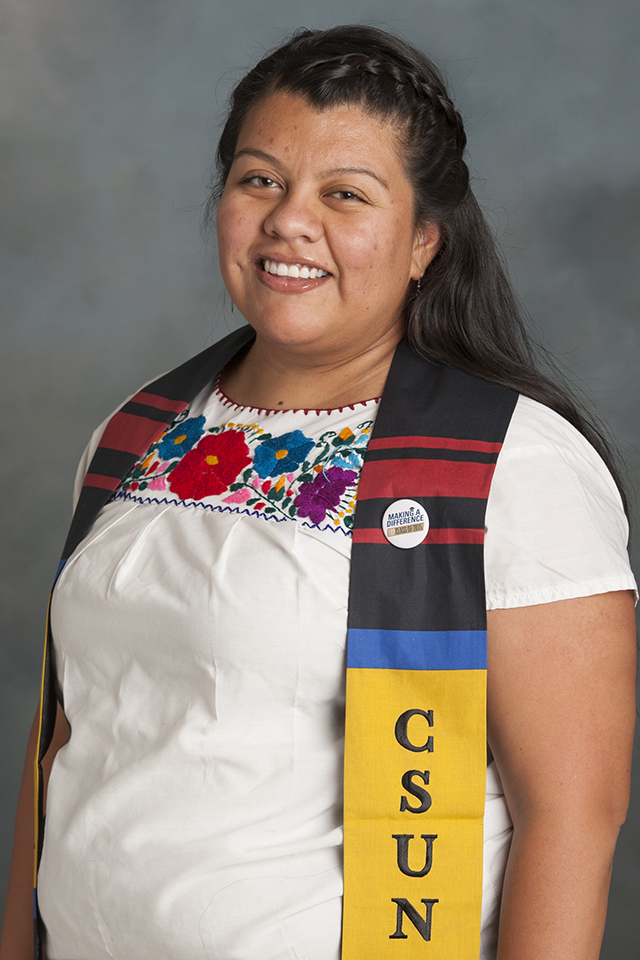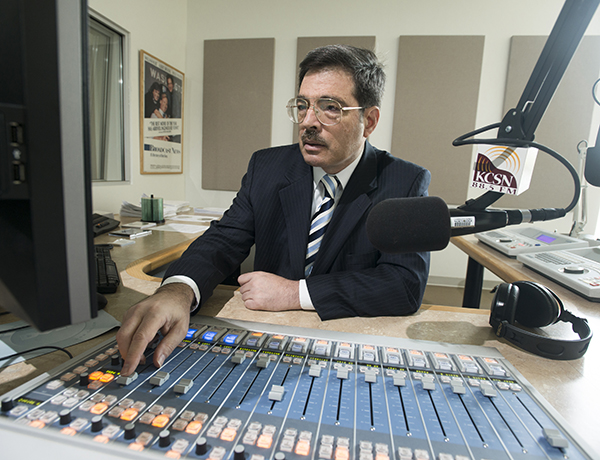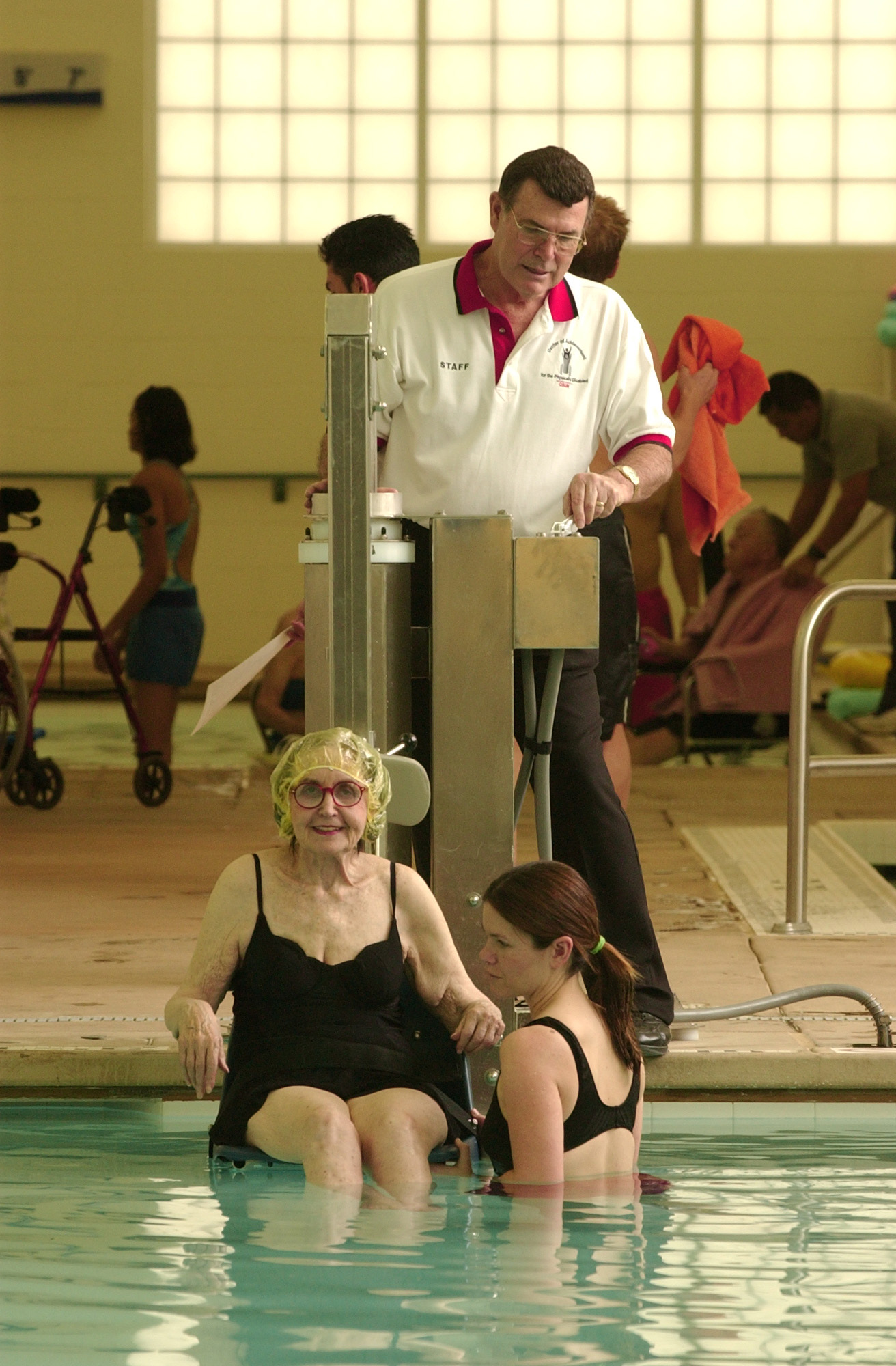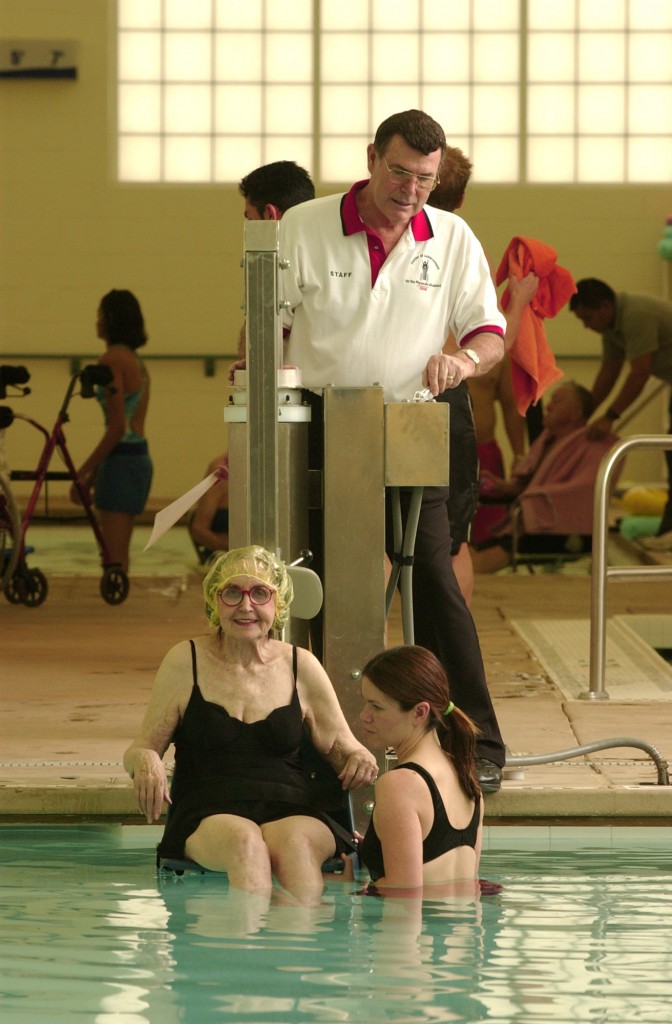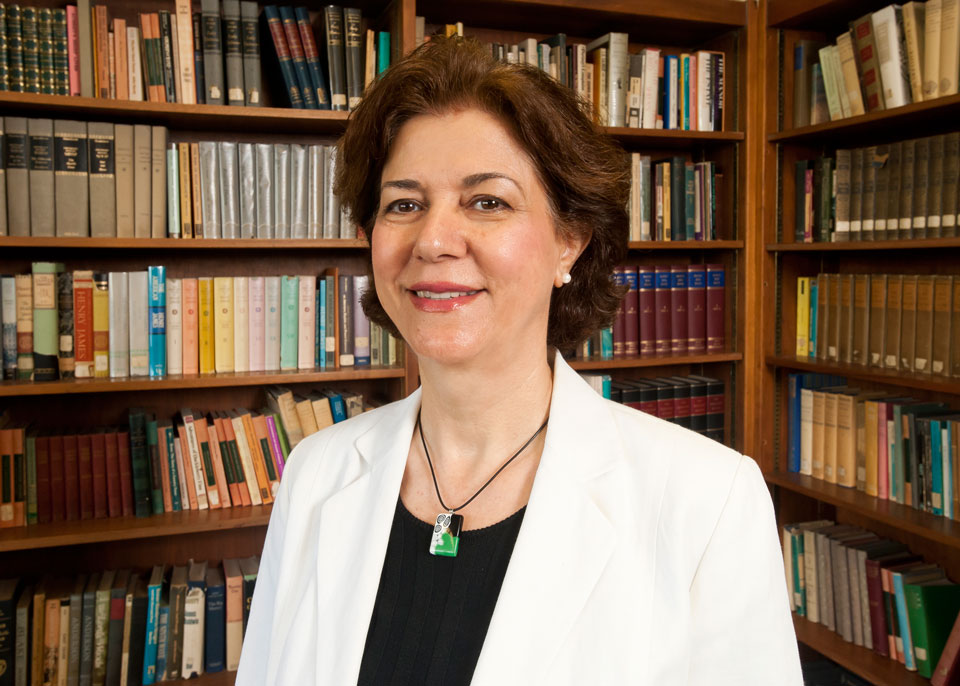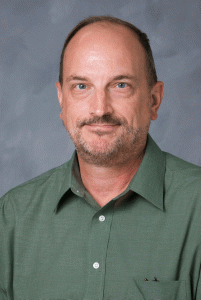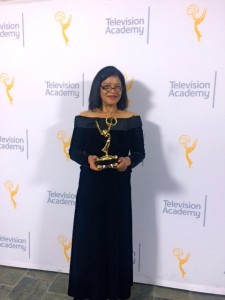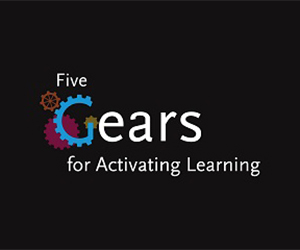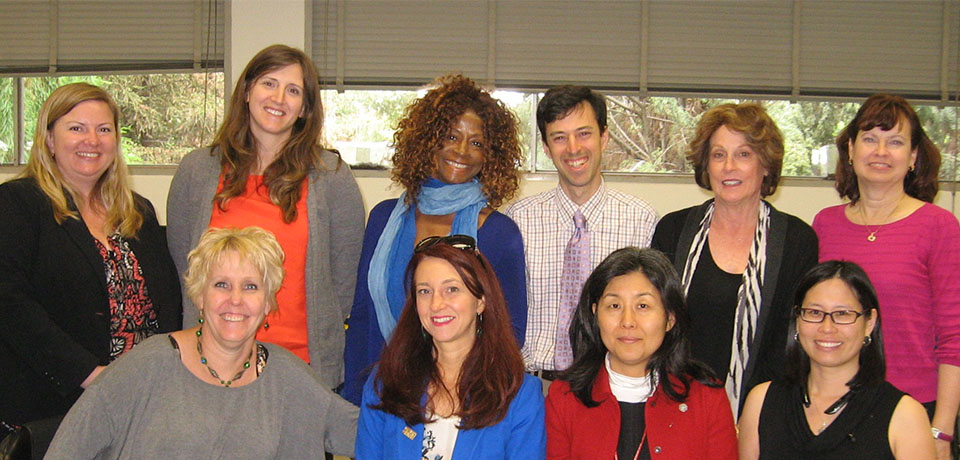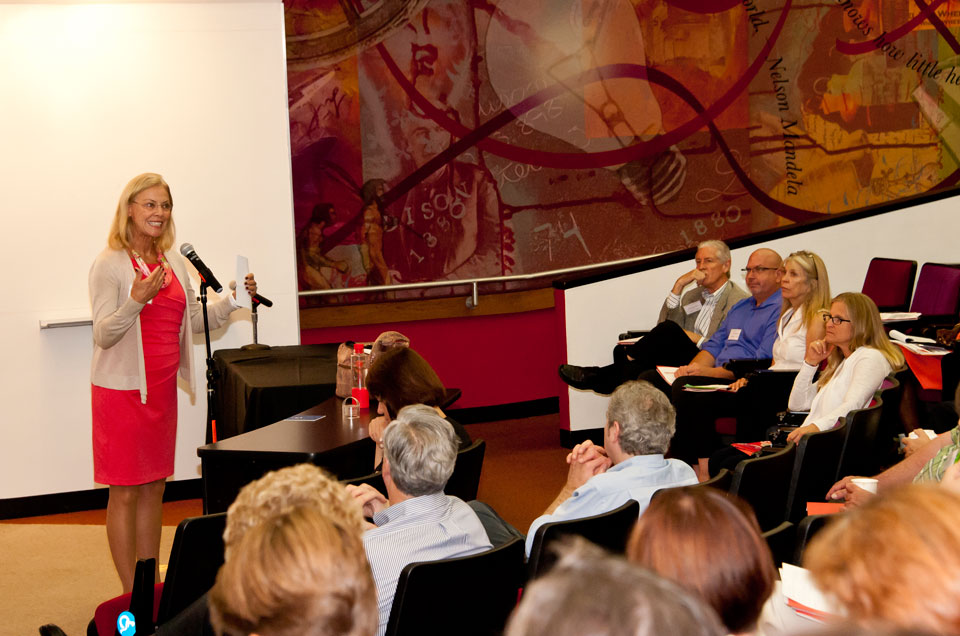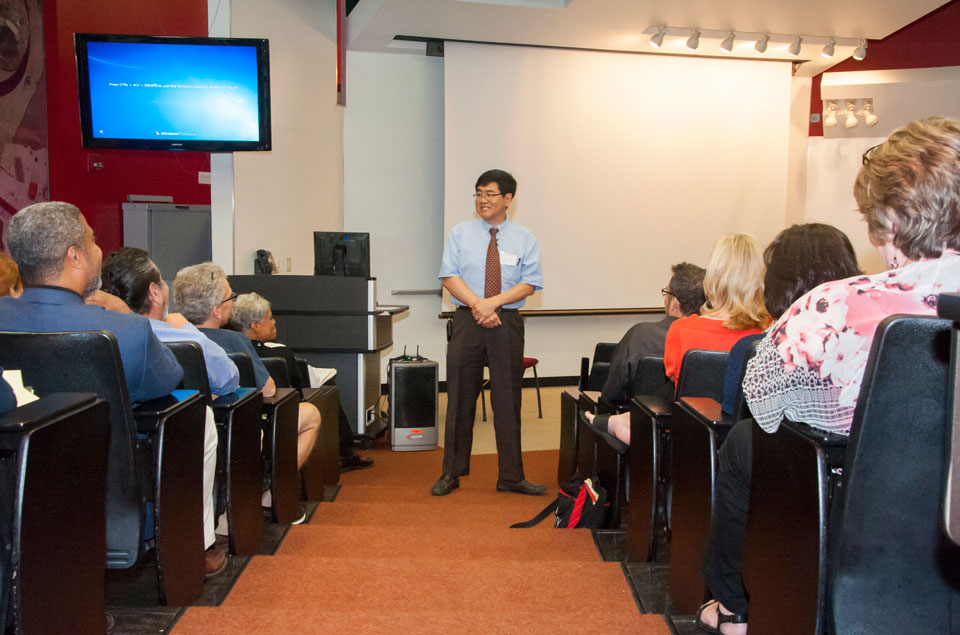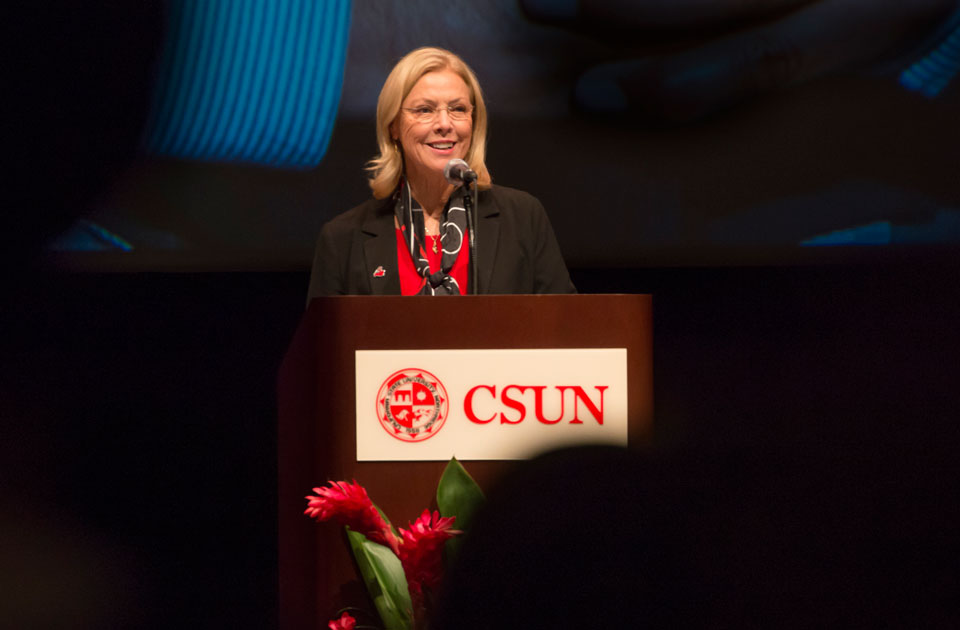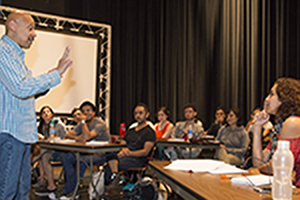
One might expect the atmosphere of a late-afternoon class in public policy on a Thursday toward the end of the semester to be sleepy and routine. Former Governor of Hawaii Linda Lingle’s Political Science 471A class at California State University, Northridge is anything but.
Fifteen minutes before class begins, vibrant conversations between classmates, cheerful greetings and smiling faces fill the room. Lingle enters and joins the banter. The camaraderie is genuine and lively. It feels more like a social gathering than a lecture. Then the clock hits 4 p.m. and it’s all business.
The students are seated seminar-style, everyone facing one another, with nameplates in front of their seats, reminiscent of a U.N. Council meeting. All attention is focused on Lingle and her guest for the afternoon, former Maui Police Chief Gary Yabuta.
Lingle has utilized her 30 years’ experience in the public service sector and her many valuable contacts to give her students a one-of-a-kind look at the practical applications in the creation of public policy.
Lingle’s political science pro-seminar class on public policy is untraditional in that there are no examinations. Instead, Lingle asks her students to design three public policy proposals from any perspective – one local, one state and one federal issue – and present them to the class. This, Lingle said, provides her students with practical experience for the real world.
“I designed the course to prepare the students to be able to walk out after graduation – to enter into a public policy setting – and to be positive contributors from the first day, wherever they go,” Lingle said.
“The most challenging part of Gov. Lingle’s class is the public policy projects, but they are also the most beneficial,” said political science junior Eliana Amundson. “You learn about the real world and that’s something you’re going to use for the rest of your life.”
Shantay Shabaz, political science junior, agrees. “You actually practice what it’s like to be in the real world and you pick up skills that you carry with you outside of the classroom. That’s way more meaningful than just a lecture,” she said.
Also unusual is the high interest outside of the political science department in the class. “We had far more interest in her class than we could accommodate and I’m especially pleased that a good number of the students in the class are from outside the major,” said Lawrence Becker, chair of CSUN’s Department of Political Science.
“It’s a class that’s very open to discussion, opinion, a lot of different ideas. You don’t just sit back in here,” said Gabby Sanchez, a political science senior.
High-profile guest speakers also brought practical knowledge and actual public policy experience to the students. Guests this semester included Yusef Robb, director of communications for Los Angeles Mayor Eric Garcetti; Linda Smith, former chief accounting officer under Presidents Carter and Reagan, and senior policy advisor to Gov. Lingle; Dillon Hosier, senior political advisor to the Los Angeles Consulate General of Israel; and Yabuta, who recently became the director of the Hawaii High Intensity Drug Trafficking Area (HIDTA), a federally funded program that advises President Obama and Congress.
“Gov. Lingle has brought a series of guest speakers to the classroom from different areas that have given students a sense of the variety of pathways from where they are sitting into public service,” said Becker. “I can’t express how fortunate we have been to have had Gov. Lingle teaching for us.”
The sentiment is one that is shared by her students as well. “One of my favorite aspects of this class is having the speakers here,” said Randall Ramos, political science senior. “You have the opportunity to find out what it’s really like.”
Ramos was a student in Lingle’s 471A seminar the previous spring. He enjoyed the class, and Lingle, so much that he came back to assist in the Spring 2015 class.
Lingle graduated cum laude from CSUN with a degree in journalism in 1975, changing her major from political science. She founded the Moloka’i Free Press in 1976 and was elected as a member of the Maui City Council in 1980, where she served until elected as Maui County Mayor.
As Maui mayor, she was the first woman and youngest person elected to office. In 2002, she broke more barriers when elected as the sixth governor of Hawaii, distinguishing herself as the first woman and first person of Jewish ancestry to lead the state as well as the first Republican in more than 40 years.
Lingle will be leaving CSUN at the end of the current semester. She has been appointed chief operating officer for the state of Illinois under new Governor Bruce Rauner, who has referred to Lingle as a “superstar.” Lingle said she hopes to use her eight years of experience as the Governor of Hawaii to help Rauner, who is serving in public office for the first time.
Lingle, who would rather remain out of the spotlight after so many years on the public scene, shifted focus back to her students. “My experience at CSUN, keeping me in touch with young people, is very important. Knowing how this generation is seeing things is important for anyone who is working in public policy,” Lingle said. “Most of the people that I work with [in Illinois] are quite a bit younger than me. [CSUN] has given me an up-to-date perspective on what young people are facing.”
What Lingle has gained from her students is a reciprocation of the dedication that she inspired in them. “It’s a privilege to be a part of this class. She doesn’t disengage when class is over,” said Shabaz.
“The best part of the class is office hours. [Lingle] will talk to you about any issue. She’s very supportive,” said Ramos.
“She answers your emails at 4 o’clock in the morning!” said Amundson. “At the beginning of the course, she said, ‘You guys are going to be my life.’”
Lingle’s prudent teaching style and inclination to give back to her alma mater is testament to the commitment she has given in her years as a public servant.
“I try to mix my classes – not just political science and not just public policy. It’s life lessons. [I’ve] got a chance to stand in front of young people and share that it’s not a straight line for anyone,” Lingle professed. “You’ve got to work hard. You’ve got to be prepared when opportunities come along, and you can’t give up. You just can’t, can’t give up.”
